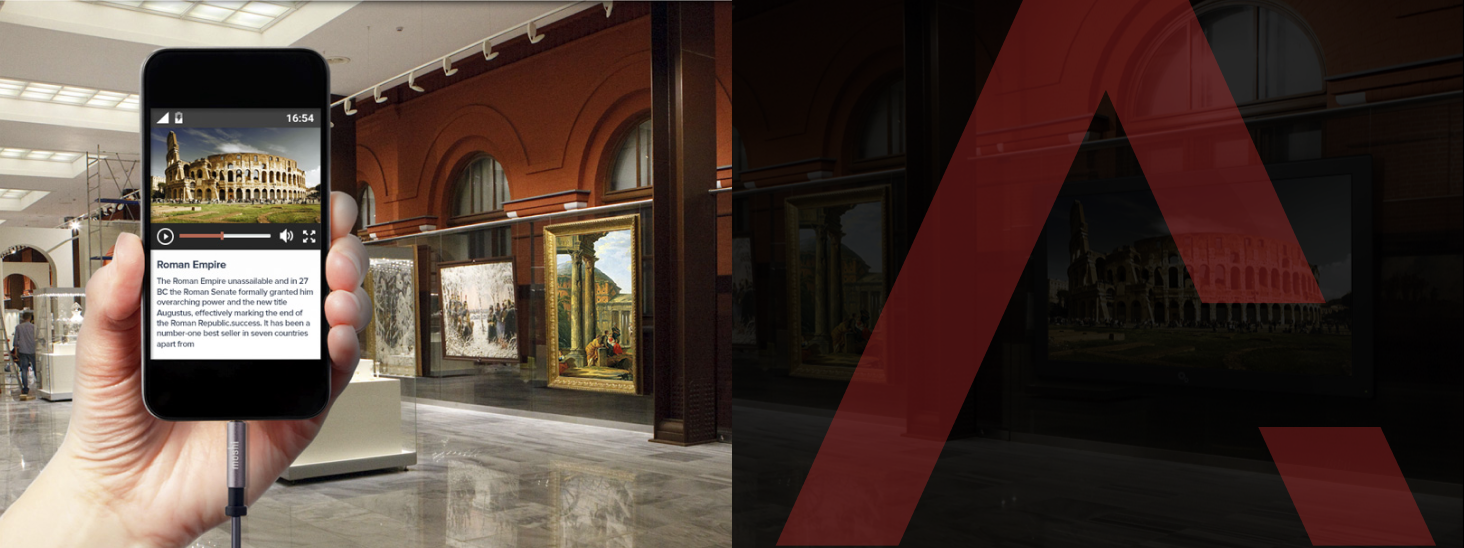

Duration: 14 months
Industry: Museums, Media
Location: USA
Employees: over 350
The customer company specializes in creating audio tours and guides for world museums of all sizes

General museum audio guide system includes a piece of hardware with connects the headphones snd a playing audio content while a visitor is going through an exhibit. An ordinary guide has been around since 90-s, and while those devices were becoming more and more interactive, getting closer to a smartphone, the general principle was always the same. Something bigger had to be added in order to win the competition. The customer clearly understood what they needed to push their product further: a new level of interactivity had to be created — a channel of communication between the audio guide and an exhibit showpiece
The client highlighted two key points they envisioned as vital parts of the future software:
Very soon a clear solution became visible. The customer wanted to create a small beacon device, which is able to broadcast a BTLE signal and place those beacons over designated points of interest, all over the museum public area. Interpolating the beacon signal, a guide device could understand its location and enable its interactive options. At a second stage of the project, custom data could be included as a part of this broadcast, finishing the original idea of creating even more spectacular tours just for everyone
Next, customers realized that even more existing museum problems could be solved with this system. One of them is security: such a system could prevent occasional trespassing or protect guides from visitors unintentionally forgetting to return them after finishing their visit. And a few more planning and monitoring capabilities could also be added for museum staff, which was also a goal of a second phase of the project
Such a solution was a set of pluggable modules and applications which customer could utilize to build end solutions for each particular museum they serve
Based on the requirements analysis, we revealed the following scope of work for Aterise:
It should be noted that room awareness is usually implemented in a similar fashion, using Apple’s iBeacon. Aterise chooses custom implementation since:
The simplest example of real-time interactivity is a TV screen, playing additional narrative in a museum hall. Museum visitors now should remove their headphones which come with the guide to hear the speaker. But with the current video timestamp translated to a device, the same video on a device can be not only automatically started when a visitor enters this room, but also immediately synchronized with the screen, providing a comfortable non-intrusive experience
Security officers are now able to easily monitor what is happening with the guides. Software modules on guide devices allow an alarm to be started when a certain event occurs, a non-mutable sound on device speakers, including screen lock with showing instructions message, telling what exactly happened and what to do now. And in some end applications it is even immediately transferred to a security terminal, showing which alarm is triggered, why, when, and where
A few solution modules are available as standalone web and mobile applications only. Those are configuration tools used to produce internal configurations, mapping museum exhibits to points of interest, creating zones, choosing optimal beacon placement and etc.
After investigation and phase implementation, the customer has received a new competitive advantage, being able to bring a product of new quality to the market. During the final stages of the project, a solution built by Aterise tied other parts built by the customer’s subcontractors into a single integrated system, now consistently serving thousands of visitors in one of the world’s most recognized museums

